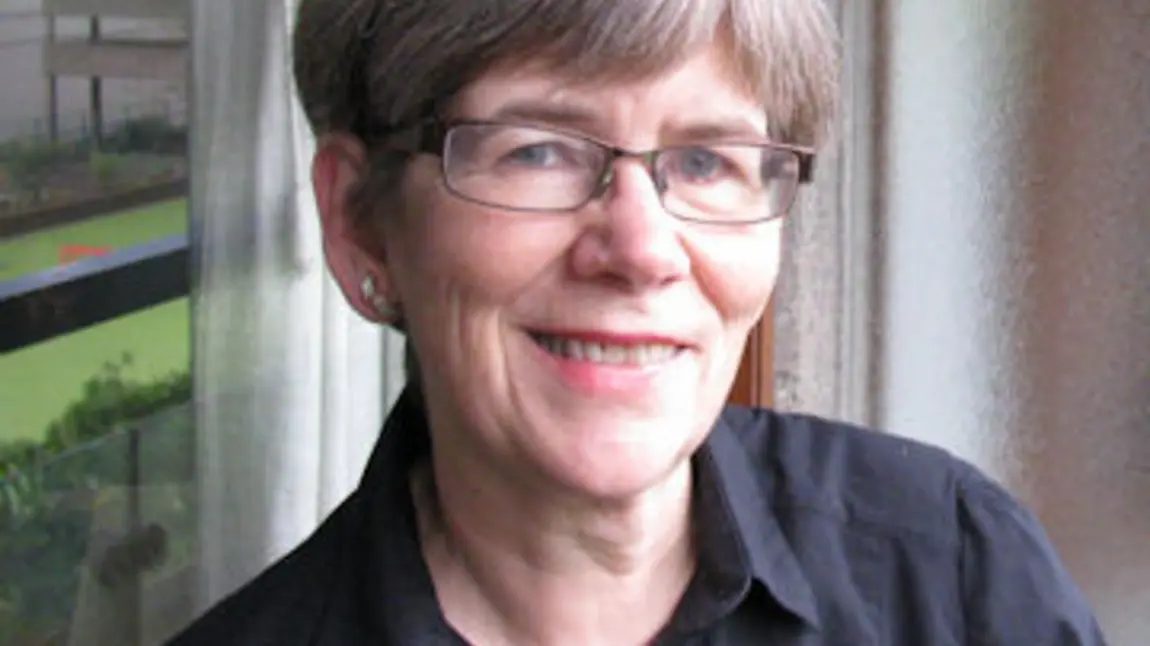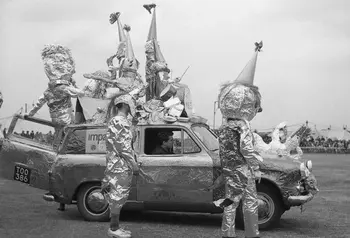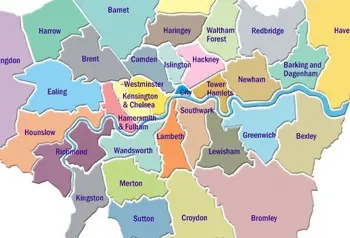Happy Birthday London Boroughs!

Formed on 1 April 1965 – alongside the name ‘Greater London’ by the London Government Act 1963 – 32 new boroughs were formed. Cathy Ross, Honorary Research Fellow at the Museum of London takes a look at how the London boroughs have shaped the way we live today.
When I lived in Bethnal Green, it always annoyed me when people assumed that Bethnal Green was in Hackney. Wasn’t it obvious that my ‘hood’ was in Tower Hamlets? Well no, it wasn’t obvious, even to fellow Londoners. And that has always been a slight difficulty for the London Boroughs. Arriving in April 1965, they always floated a little bit free from the map of day-to-day London. Without a tube station named ‘Tower Hamlets’, it could be anywhere.
And yet my irritation at being mistaken for a Hackney resident also tells another story. Units of local government do inspire loyalty. Londoners may complain about service delivery (and we do!) but these boroughs are ‘our’ boroughs, and they play a big part in our lives. A 50th birthday is a milestone in anybody’s life and so should it be for the London Boroughs: a time to look back, reflect and celebrate.
The boroughs were born from two logical assumptions on the part of 1960s politicians. The first was that in inner London, the 28 existing metropolitan boroughs were just too small and parochial to deliver services effectively. The second acknowledged that London had grown; and the ring of urbanised outer districts that encircled the metropolitan boroughs really should be governed as part of ‘greater London’. The 32 spanking-new London Boroughs were to bring economies of scale and efficient urban management. It was all very 1960s.
Which isn’t to say that the birth wasn’t controversial. There were bitter fights over names and boundaries. Labour-controlled Willesden and Conservative-controlled Wembley embraced through gritted teeth to make the new London Borough of Brent. But the boroughs were born. And they have survived: unlike their sibling, the Greater London Council, which only made it to 20 before an untimely death in 1986.
So what have the London boroughs done for us over the last 50 years? Where do you start! Walk down any street in London and the local borough is the invisible ‘curator’ of what you see. The buildings, the housing, the parks, street furniture, even the paving stones all reflect choices that your local borough has made. In my trainspotter-y way, I am always rather thrilled by distinctive borough street furniture. Tower Hamlets has a rich harvest, dating from the 1990s when the borough devolved power down to ‘neighbourhoods’, an experiment that failed politically but which nevertheless left a physical legacy. The 1990s plaques, bollards and street signs still contribute to local look-and-feel today.
Building a distinctive sense of place has been at the heart of much of the London Boroughs’ work. As the borough architect for Lambeth once reflected: ‘what we wanted to do was to rebuild the bits of Lambeth that needed rebuilding… in such a way that people going past in a bus would look at it and know they were in Lambeth because of the design quality’. At the time this was said, rebuilding largely meant housing. Vying with the Greater London Council for the height of their tower blocks, some boroughs built on a heroic scale. Brent, for example, constructed the vast Chalkhill estate on a site formerly on the Wembley side of the borough but now earmarked for families from overcrowded Willesden. Chalkhill proved to be a troubled place, but problems were eventually tackled and after major surgery the estate emerged, differently managed and not wholly problem-free but still home to a community. The ‘mistakes’ of the 1960s housing estates are notorious. But their subsequent regeneration is, I think, a rather inspiring story, and one in which the London Boroughs should take pride.
The work of the boroughs isn’t just about the visible things. A ‘sense of place’ has intangible elements, and the boroughs also have an inspiring story to tell in the way they have steered their areas through times of great population churn. The last 50 years have been roller-coaster ones for London in terms of community-cohesion. Local councils must surely be credited as one of the stabilising factors. Grassroots cultural festivals have helped new communities bed down: social services (an area of work that’s easy to knock) have enabled people to cope with change. Overall, is it too much to claim that the London Boroughs are the unsung heroes of the past 50 years in the task of keeping this ungovernable city civilised?
So, happy birthday London Boroughs! You’ve made it to 50, and here’s hopes for 50 more years to come. Complaints aside, we’ve actually grown rather fond of your presence in our lives. London just wouldn’t be the same without you.

